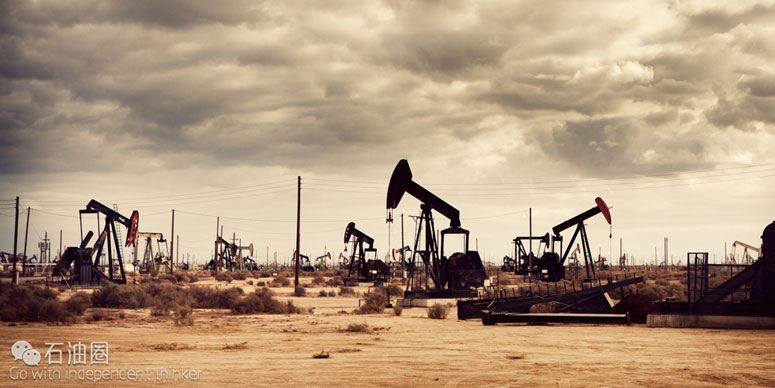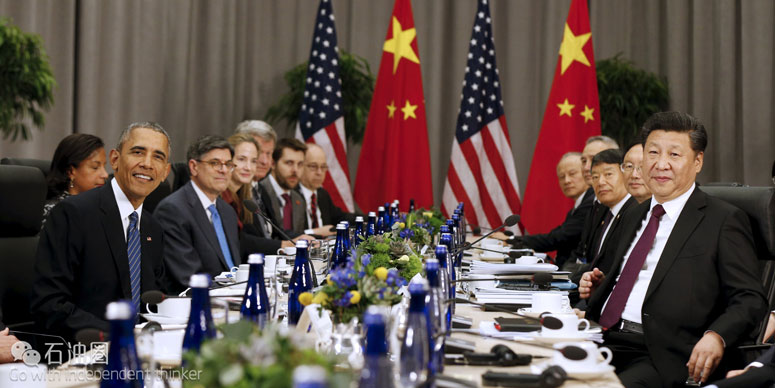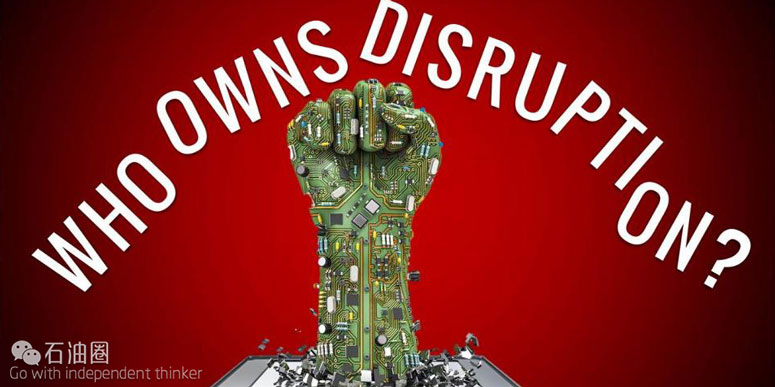Disruption, mostly due to the advent of new technologies that make old business models uncompetitive and eventually obsolete, has become a fashionable concept. Established companies fear it and start-ups hope to create it. We know the iconic examples of disruption: Amazon practically wiped out bookstores, travel agencies and newspapers have been “dis-intermediated” and Uber and Airbnb are upending the business of taxis and hotels. No industry has been spared, and the energy sector is no exception. Hydraulic fracturing and other technologies that have deeply altered the way in which hydrocarbons are produced and advanced the industry’s technological frontier have changed not merely the oil and gas business but altered longstanding geopolitical arrangements. Yet, notwithstanding the indubitable impact of new technologies, another source of disruption well known to oil and gas companies continues to be a major force in shaping the world of energy: politics.
In fact, the attention to technological disruption has distracted us from the fact that politics continues to be the most disruptive force of all in the oil and gas markets.
A brief intellectual history of disruption
The pattern whereby an entire industry can be disrupted was first identified by the German Marxist sociologist Werner Sombart in his 1913 work War and Capitalism. The idea was later refined by Joseph Schumpeter in his 1942 book: Capitalism, Socialism and Democracy. Schumpeter famously called it “creative destruction” and said that it was “an essential fact about capitalism,” basing his ideas on Marx’s early assertion about the self-destructive tendencies of capitalism. He characterized it rather dramatically as “a process of industrial mutation that incessantly revolutionizes the economic structure from within, incessantly destroying the old one, incessantly creating a new one.”
Half a century later, Clayton Christensen, a Harvard Business School Professor, extended this idea by describing in 1995 what he called “disruptive innovations”: new technologies and business strategies that create a different product, one that of-ten displaces the dominant player in that market and at times even creates an entirely new market. iPad is, of course, the paradigmatic example of this latter phenomenon.
Christensen’s concept of disruptive innovation was validated by a flurry of new technologies and business models—often related to the Internet— that in turn spawned a wave of new companies that quickly became market leaders. Searching for the “disruptive innovation” that would drastically alter the old ways of doing business in a given sector became the obsession of inventors, entrepreneurs, investors and analysts. Existing companies became alert to threats represented by the irruption of a new way of doing business that would wreak havoc in their traditional markets.
As noted above, in the oil and gas industry, hydraulic fracturing and related technologies have created new ways of producing hydrocarbons, in the process bringing new companies and new financial models to life, and unleashing enormous and unprecedented geopolitical shifts, such as the dramatic emergence of the United States as one of the three main oil and gas producers (with the potential to become a major exporter). In addition to hydro fracking, solar panels and batteries, wind turbines, biomass gasification and the promise of tidal energy, are only a few of the technological innovations changing the face of the energy industry across the planet. But focusing only on technologically induced disruption obscures the fact that politics can be as disruptive to an industry as a new technology. Although the term “disruption” often brings to mind the dramatic changes brought about by technological innovation, most commonly related to information technologies, computing and the internet, the reality is—at least in the world of energy — that political changes are having as great an impact as new technologies— if not more. The oil industry has a long experience with the impact of politics on its operations and profitability. Recent trends confirm this historical pattern. Here are six examples of recent politically induced disruption that illustrate the importance of non-technological factors in defining winners and losers in energy markets.
1 THE POLITICS OF CONTAINING GLOBAL WARMING
It has taken a while but now there is close to a scientific consensus about the link between fossil fuel consumption and global warming. This scientific consensus has led to a political consensus about the need to minimize the use of such fuels if the planet is going to avoid major climate change. The political decision reached in Paris by 150 nations in November 2015 to limit global temperature increase to well below 2 degrees Celsius, while urging efforts to limit the increase to 1.5 degrees, established binding commitments by all parties to make “nationally determined contributions” (NDCs) and will have enormous consequences for the energy industry. The Paris agreement represents the biggest game changer in the global pattern of energy consumption, which has been based for more than 100 years on coal and fossil hydrocarbons. Direct actions resulting from this decision include a $19 billion pledge made by developed countries to support developing nation efforts to promote renewable energy and the creation of a 120 nation International Solar Alliance, led by France and India, to support solar energy deployment in their countries. Non-governmental organizations, cities and private investors also became involved in this major initiative. Bill Gates and ten other investors have launched the Breakthrough Energy Coalition to steer private capital into clean energy projects. At a side summit in Paris, the Compact of Mayors, hosted by Paris Mayor Anne Hidalgo and former New York Mayor Mike Bloomberg, has committed more than 360 cities around the world to deliver over half of the world’s potential urban emission reductions by 2020. These are political decisions that will drive immense change in the industry and spur the creation and growth of new energy-related businesses.
2 THE U.S. ENERGY POLICY
The dramatic increase in oil and gas production in the United States, mostly the result of the intensive use of hydro fracking, has triggered important politically determined changes in energy policy. Perhaps the most important has been the lifting, in November 2015, of the prohibition to export crude oil, which had been in place since 1973. Such a major political decision comes at a time when U.S. domestic refineries are reaching their maximum levels of shale oil processing capacity, and oil storage in the U.S. is at an historical high, making crude oil exports a logical move. The decision has opened the door for significant changes in the global role of the U.S. as a net hydrocarbons exporter. One example is its impact in Europe, which can now reduce its dependence on Russian gas. Lifting the ban on U.S. oil exports also provides Washington with a formidable geopolitical weapon in its relations with oil producing countries.
3 CHINA’S ECONOMIC SLOWDOWN
The impact of China’s level of economic activity on global energy demand (and prices) is well known. An economic downturn in China means lower prices for all the commodities that the Asian giant voraciously imports and oil is no exception. The current lower rate of growth of China’s economy can be dismissed as just a transitional phase of a normal economic cycle. That means that after decades of double-digit growth, it is only normal that a period of slower growth ensues. But the concern is that China’s economy may not just be slowing down temporarily but has instead entered a new and prolonged period of meager growth. The experts who hold this less sanguine view of the Chinese economy argue that there is ample evidence pointing to the fact that a major structural change is underway. Last year, China’s growth was the weakest of the last 25 years, accompanied by a collapse of the stock market and a significant devaluation. In January of 2016, some $110 billion left the country, while over $600 billion of capital flight took place during 2015. The most troubling sign, however, is the skyrocketing growth of the national debt, which has tripled since 2007.
In response, the government has stressed its intention to move the economy away from its reliance on exports as a source of growth to the expansion of the domestic market and from massive infrastructure investments and industrial development to the stimulus of a larger and stronger service sector. All these are political decisions that will profoundly change the way China produces and consumes energy.
4 THE CRISES IN THE MIDDLE EAST
Bloomberg reports that “about 2.6 million barrels a day are being kept from the market by conflict and sanctions in the region, more than five times the average from 2000 to 2010.” The IEA energy outlook for 2016 reports oil production disruptions averaging 3.2 million barrels per day over the last two years, mostly due to political instability in Iraq, Libya, South Sudan and Syria. This significant supply imbalance has been partially compensated by new Iranian exports, which have doubled since last year, reaching 2.1 million barrels per day in May. Such an increase is the result of the lifting of sanctions against Iran by western powers, following the nuclear deal reached in July 2015. This decision has disrupted the global oil supply and has contributed to fragment and weaken OPEC, leading one of Vladimir Putin’s main collaborators, Igor Sechin, to say that “OPEC has practically stopped existing as a united organization.” And this of course is just one example. Libya, Syria, Egypt and the Eastern Mediterranean are all hotspots rife with instability and hydrocarbons. In the Middle East politics far outweighs technology in defining its weight in the world of energy.
5 RUSSIA’S EXPANSIONISM AND SANCTIONS
Russia’s 2014 annexation of Crimea triggered economic sanctions by the European Union and the United States. Some of these sanctions directly affect the Russian energy sector and its ability to continue to be the foremost supplier of natural gas to Europe. The sanctions include the freezing of exports to Russia of energy related equipment and technology and the banning of the supply to Russian oil and gas companies of services like drilling, well testing and completion services. The implications are as enormous as the surprises. Many observers predicted that the international coalition that supported the sanctions would quickly fragment, that the sanctions would be watered down or that they would be short-lived and ineffectual. None of these predictions has come to pass. Instead, the Kremlin’s decision to annex Crimea and destabilize Ukraine has resulted in major upheavals in Russia’s oil and gas industry and an unexpected opening for U.S. gas exporters to European markets.
6 THE IMPLOSION OF VENEZUELA AND BRAZIL
Mismanagement, lack of investment and massive corruption in Venezuela’s state oil company, Petroleos de Venezuela, and corruption scandals in Brazil’s state oil company, Petrobras, are causing severe disruption in the production and development plans of these two oil giants. Petrobras is now afflicted by the largest debt among all major oil companies and its 5 year investment plan to 2020 is down by 25 percent, while its stock has lost 80 percent of its value in the last two years. In spite of its large oil reserves, Venezuela’s production and exports have declined significantly, relegating the country to playing a minor role in the global energy sector. In both cases, technology had nothing to do with their downfall. It was all about politics.
It is common for corporate leaders of oil and gas companies to stress that their companies are as technological as those of any other industry—if not more so. In fact, the investments in research and development of the large oil companies are staggering and the list of successful innovations that they have brought to the markets is equally impressive.
There is no denying that technological innovation is an integral part of this industry. But it is equally true that few other industries are as directly impacted by politics as oil companies. Yes, technology can disrupt this industry and in the past it has done so, but not as much nor as often as politics.


 石油圈
石油圈




